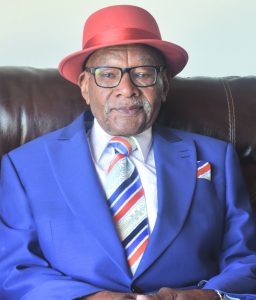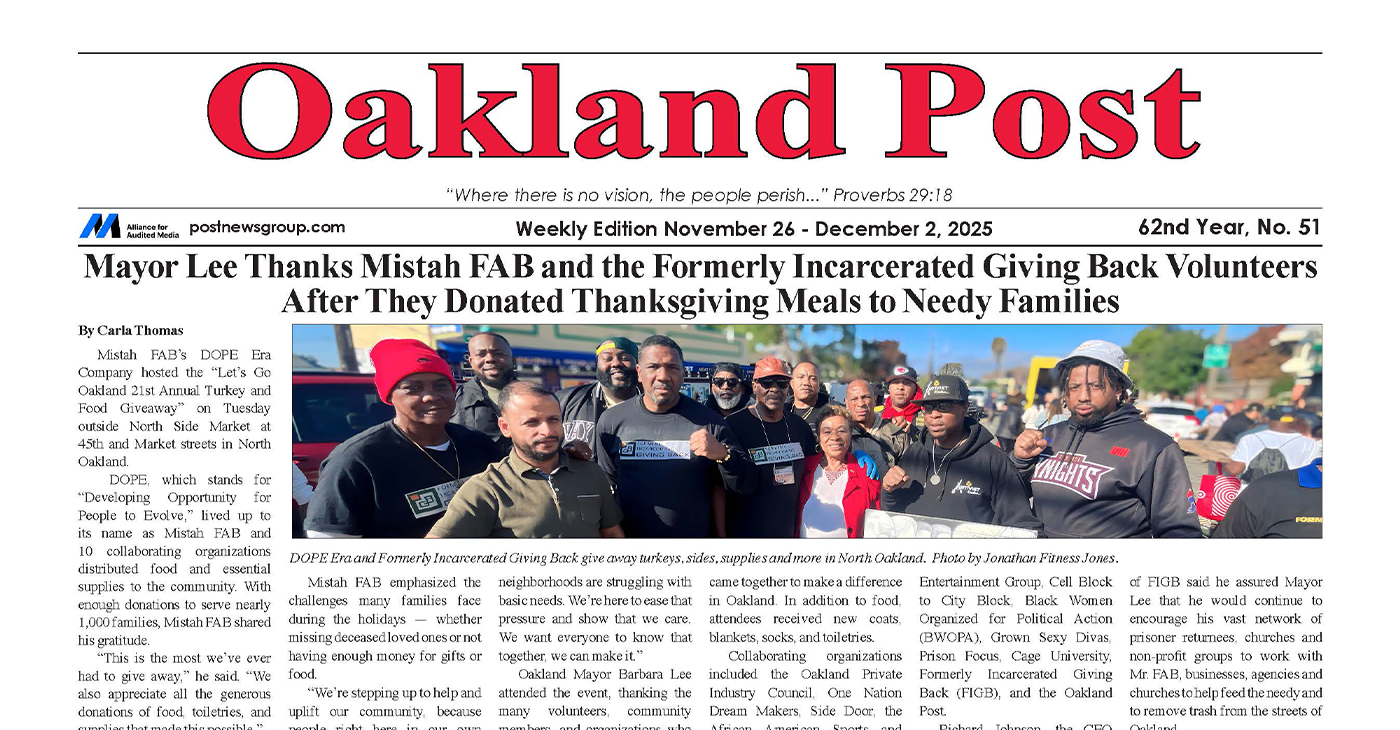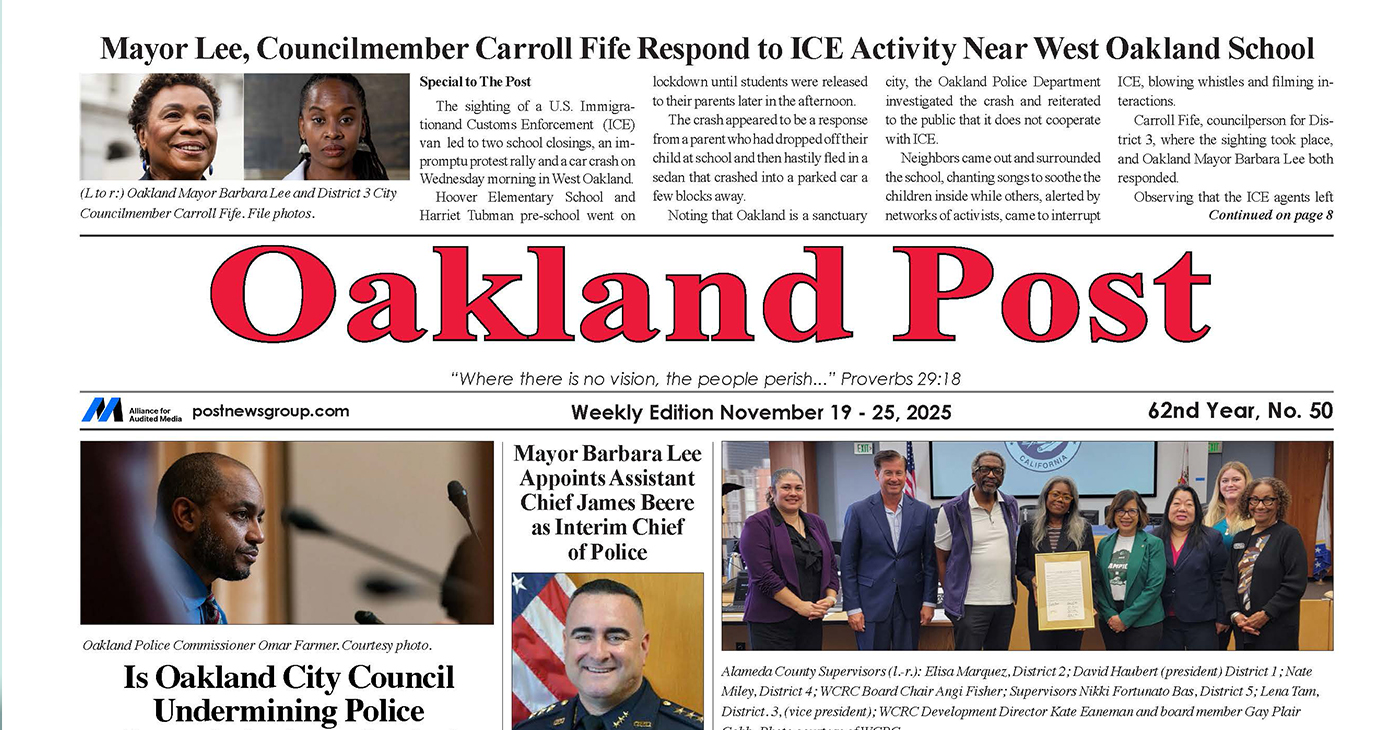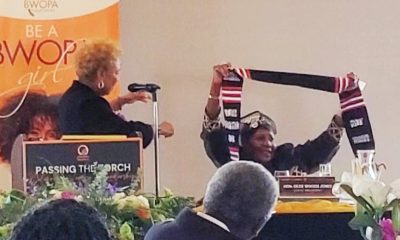Oakland Post
Oakland Businessman Yanci Taylor Sr. Turns 96

Yanci Taylor celebrates his 96th birthday on February 24, 2020. He was born in a rural town of Lot, Texas, in 1924 to Yanci Taylor Sr. and Mariah Taylor. Taylor was the fourth out of eight children.
He would complete high school and later marry Alberta Taylor in 1945. This union would produce two children. Shortly after, he was drafted into World War II, becoming a non-commissioned officer.
While in the Army, Taylor was a barber and learned how to be an electrician. He had skills in carpentry that he learned from his father and skills in clothing from his mother who was a seamstress.
After three years of service, Taylor purchased his first property.
He applied to join the union for electricians but was denied because the electrician union did not accept African Americans. Taylor then joined the union for carpenters, eventually becoming a subcontractor.
Taylor set his sights on starting and owning a clothing store in downtown Oakland. He hired an attorney to obtain a master lease for Yanci’s Clothes Hanger store from Coldwell Banker in June 1964. Taylor had to get an attorney to obtain a lease because there was a lot of reticence from the property managers to lease to an African American man.
Taylor would go on to become the first African American to own and operate a retail shop in downtown Oakland. The store was in a prime location at 1422 Broadway and it became very successful with 21 years of business.
The store carried suits, shirts, shoes, exotic furs and excellent fabrics. Mr. Taylor would travel to manufacturers’ conventions and shop for the clothing himself. The high quality of the materials attracted a diverse clientele from baseball player Willie Mays, to San Francisco Mayor Willie Brown, civil rights attorney John Burris, Congressman Ron Dellums, Huey P. Newton of the Black Panther Party and many influential people.
Taylor has been a member of North Oakland Missionary Baptist Church since the 1940s, joining upon his arrival on the U.S. Army base. He is the father of renowned jazzman Yanci Taylor Jr.
Taylor has won two trophies in recent years for being the oldest living family member at his family reunion in Texas. His grandmother lived to be 100 years old.
At 96, Yanci Taylor does 50 push-ups every morning, listens to jazz, cooks for himself and makes his own juice from his lemon tree.

Yanci Taylor. Photo by Tymeesa Rutledge.
Alameda County
Seth Curry Makes Impressive Debut with the Golden State Warriors
Seth looked comfortable in his new uniform, seamlessly fitting into the Warriors’ offensive and defensive system. He finished the night with an impressive 14 points, becoming one of the team’s top scorers for the game. Seth’s points came in a variety of ways – floaters, spot-up three-pointers, mid-range jumpers, and a handful of aggressive drives that kept the Oklahoma City Thunder defense on its heels.

By Y’Anad Burrell
Tuesday night was anything but ordinary for fans in San Francisco as Seth Curry made his highly anticipated debut as a new member of the Golden State Warriors. Seth didn’t disappoint, delivering a performance that not only showcased his scoring ability but also demonstrated his added value to the team.
At 35, the 12-year NBA veteran on Monday signed a contract to play with the Warriors for the rest of the season.
Seth looked comfortable in his new uniform, seamlessly fitting into the Warriors’ offensive and defensive system. He finished the night with an impressive 14 points, becoming one of the team’s top scorers for the game. Seth’s points came in a variety of ways – floaters, spot-up three-pointers, mid-range jumpers, and a handful of aggressive drives that kept the Oklahoma City Thunder defense on its heels.
One of the most memorable moments of the evening came before Seth even scored his first points. As he checked into the game, the Chase Center erupted into applause, with fans rising to their feet to give the newest Warrior a standing ovation.
The crowd’s reaction was a testament not only to Seth’s reputation as a sharpshooter but also to the excitement he brings to the Warriors. It was clear that fans quickly embraced Seth as one of their own, eager to see what he could bring to the team’s championship aspirations.
Warriors’ superstar Steph Curry – Seth’s brother – did not play due to an injury. One could only imagine what it would be like if the Curry brothers were on the court together. Magic in the making.
Seth’s debut proved to be a turning point for the Warriors. Not only did he contribute on the scoreboard, but he also brought a sense of confidence and composure to the floor.
While their loss last night, OKC 124 – GSW 112, Seth’s impact was a game-changer and there’s more yet to come. Beyond statistics, it was clear that Seth’s presence elevated the team’s performance, giving the Warriors a new force as they look to make a deep playoff run.
Activism
Oakland Post: Week of November 26 – December 2, 2025
The printed Weekly Edition of the Oakland Post: Week of November 26 – December 2, 2025

To enlarge your view of this issue, use the slider, magnifying glass icon or full page icon in the lower right corner of the browser window.
Activism
Oakland Post: Week of November 19 – 25, 2025
The printed Weekly Edition of the Oakland Post: Week of November 19 – 25, 2025

To enlarge your view of this issue, use the slider, magnifying glass icon or full page icon in the lower right corner of the browser window.
-

 Activism3 weeks ago
Activism3 weeks agoOakland Post: Week of November 12 – 18, 2025
-

 Activism4 weeks ago
Activism4 weeks agoOakland Post: Week of November 5 – 11, 2025
-

 Activism2 weeks ago
Activism2 weeks agoIN MEMORIAM: William ‘Bill’ Patterson, 94
-

 Activism3 weeks ago
Activism3 weeks agoHow Charles R. Drew University Navigated More Than $20 Million in Fed Cuts – Still Prioritizing Students and Community Health
-

 #NNPA BlackPress3 weeks ago
#NNPA BlackPress3 weeks agoThe Perfumed Hand of Hypocrisy: Trump Hosted Former Terror Suspect While America Condemns a Muslim Mayor
-

 Bay Area3 weeks ago
Bay Area3 weeks agoNo Justice in the Justice System
-

 #NNPA BlackPress3 weeks ago
#NNPA BlackPress3 weeks agoProtecting Pedophiles: The GOP’s Warped Crusade Against Its Own Lies
-

 #NNPA BlackPress2 weeks ago
#NNPA BlackPress2 weeks agoTrump’s Death Threat Rhetoric Sends Nation into Crisis


























































